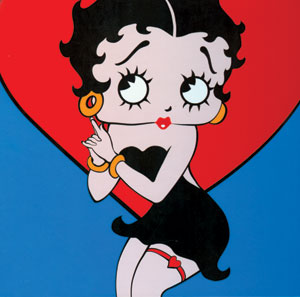ENGLISH AUTHOR Stephen Cavalier seems to be emulating Robert Sklar’s now-indispensable World History of Film, and as such, his book The World History of Animation divides that history into three parts, just as Sklar does with movies. Rather than “silent, sound and digital,” Cavalier prefers “studio, television and digital.”
The last decade was one of animation’s most prodigious ever—there was a lot of garbage around, but Pixar’s John Lasseter did prove himself exactly what Cavalier calls him, the successor to Walt Disney. Cavalier also retrieves the memories of forgotten pioneers and exponents of smaller nations—we learn that there was a cartoon made in Hanoi in 1966, for instance.
Names we were delighted to re-encounter or meet for the first time include Cine16 stalwart Carolyn Leaf, Richard Williams, the Wan Brothers of China and Karel Zeman, whose 1958 Fabulous World of Jules Verne is just lying around waiting for steampunks to see it and claim it. Ladislaw Starewicz’s stop-motion animation continues to dazzle decades later. But who has ever heard of Emile Cohl, the pioneer animator of more than a century ago, who was a member in good standing of a proto-surrealist group called the Incoherents?
Glancing through the volume reaffirms an old prejudice that Bruno Bozzetto’s Allegro non Troppo was the best full-length animated film of the 1970s. However, ideas taken as certainties are challenged. Lotte Reiniger, the shadow-puppet animator who collaborated with Jean Renoir and Fritz Lang, may still be director of the oldest extant feature-length animated film. But the lost and forgotten Argentine cartoon El Apostol may have indeed been the first full-length animated film back when it was made in 1917.
This book is written for general readers. It’s Wikipedia-ish and comfortingly reasserts simple facts, such as the idea that an audience “just wants to see a good story, well told.” To his credit, Cavalier gives placement to people who don’t draw or paint in the Disney style, such as Don (Rejected) Hertzfeld and the South Park gang. His history of Warner Bros.’ best years in animation neatly condenses the studio’s high points (1939–58 or so with a coda of excellent TV animation in the 1990s). Unfortunately, there is little visual evidence here of what the characters all looked like—licensing is a bitch. If there’s a problem, it’s that Cavalier is more of a historian than a critic. Overcautious judgments leach color from his prose. And it’s hard to forgive an author who blazons Betty Boop on his cover for his muted enthusiasm for the Fleischer brothers: “Their achievements now seem insignificant relative to Disney’s.” In fact, this very rivalry with Disney (whom Cavalier clearly prefers) makes a forked path through the history of animation: between the slaved-over realistic and the bizarrely, anarchically cartoony.
The World History of Animation
By Stephen Cavalier
UC Press; $39.95



